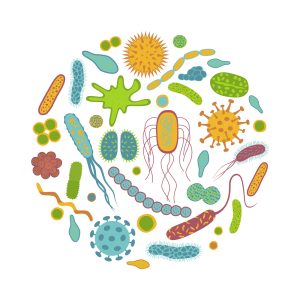 There are a lot of words to understand when it comes to metabolism and your health and what you should do to build a healthy metabolism. Here are a few more terms.
There are a lot of words to understand when it comes to metabolism and your health and what you should do to build a healthy metabolism. Here are a few more terms.
What is the microbiome? (microbiome comes from Ancient Greek mikrós ‘small’ and bíos ‘life’)
It is the community of microorganisms (living things too small to be seen with the naked eye) that can usually be found living together in any given habitat. The microbiome refers to the environment that microbes live in. The microbes include bacteria, fungi, and viruses.
The human microbiome consists of communities of microbes that live on the skin, the mouth, the genitals, and especially the gut.
The ‘gut microbiome’ is made up of the trillions of microorganisms that live in the intestinal tract and play a key role in digesting food and helping to absorb and synthesize nutrients.
These microorganisms, mainly comprising bacteria, are involved in functions critical to your health and wellbeing. They are involved in many other important processes that extend beyond the gut, including metabolism, body weight, immune system regulation, as well as brain function and mood.
What is the microbiota?
Microbiota is the microscopic organisms of a particular environment. These live in communities in various parts of the body.
The full array of microorganisms (the microbiota) lives on and in humans. This microbiota represents a remarkably diverse array of microorganisms that includes bacteria, archaea (primitive single-celled organisms), fungi, and even some protozoans and nonliving viruses. Bacteria are by far the most numerous members of the human microbiome.
The human gut microbiota refers to the trillions of microbes, such as bacteria, that live in the human gut. They live in the gut microbiome. Most microbes in the body are useful, but they may become harmful when out of balance.
What is a leaky gut?
Leaky gut is a weakened intestinal wall that allows bacteria and toxins into the bloodstream.
Undigested food particles can slip through the lining of the intestinal wall into the capillaries or lymph vessels which are similar to vein capillaries.
These undigested food particles contain chains of amino acids which should be broken down into single amino acids but are not. These chains of amino acids look like viruses, bacteria or other microscopic parasites to the immune system and an immune response is initiated. Because the lining is undernourished, it continues to leak, and the immune system continues to attack.
We hope this helps you to understand metabolism so you fix yours and have your metabolism functioning the way it should and move towards optimal health and vitality.
